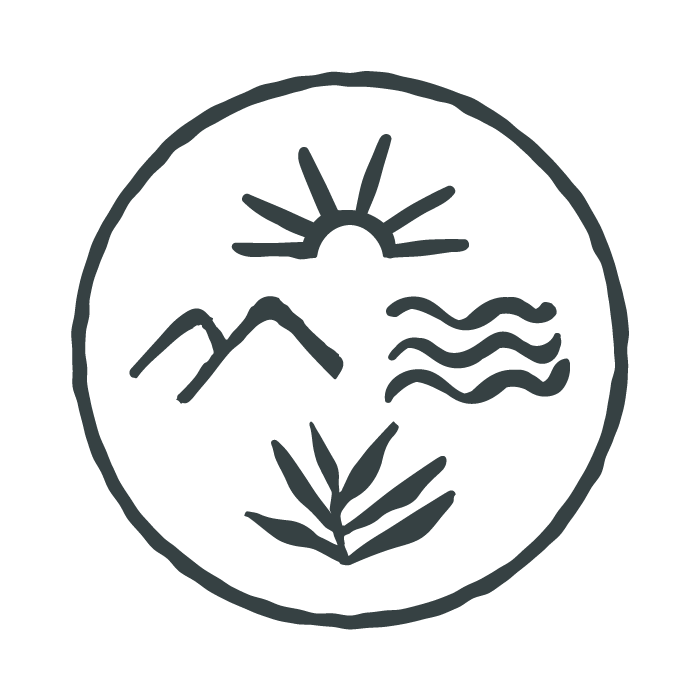
Vietnam is a vast, beautiful, diverse country. Jam-packed with dramatic landscapes, colourful temples and friendly locals. It’s also absolutely gigantic, and not somewhere I think you can conquer in a single two week trip. So instead, for first timers I definitely recommend you spend 14 days just focusing on travelling through the north in great depth. This will allow you to have a more relaxed, immersive and enjoyable experience.
If you’re a keen hiker like myself, then you will be in absolute heaven. Having visited Vietnam three times, I personally much prefer the dramatic landscapes in the northern regions of the country. So if you’re looking for an active escape and to discover some hidden gems away from the crowds, this is the northern Vietnam travel guide for you!
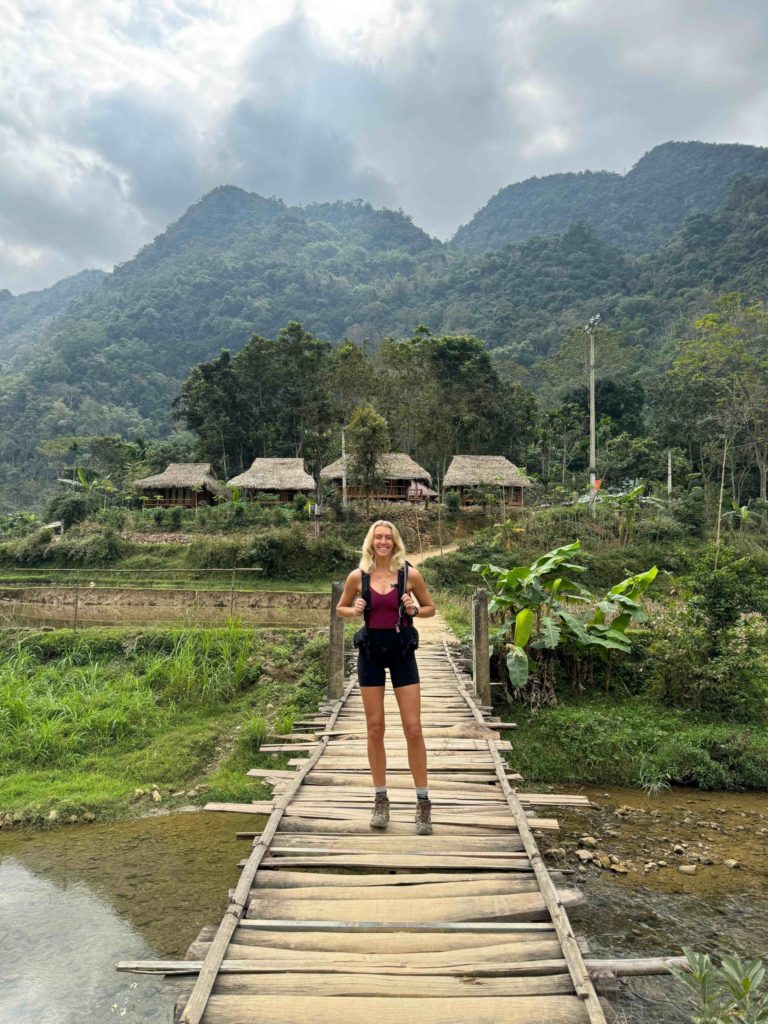
There are direct flights from the UK to Hanoi. The cheapest ones I found were with Vietnam Airlines, who have absolutely amazing in-flight food!
Vietnam is well connected with an extensive network of airports, buses and trains, although I’d recommend booking ahead for those if you can. We actually had a private driver for the duration of our trip and got around on the roads, which was easy and convenient.
Northern Vietnam is a destination you can honestly visit year round. We went in the low season, January, and were super lucky with the weather. We were hiking in shorts every day and swimming in waterfalls in the sunshine. However, the most recommended time for travel is around March-April or September-November. Just watch out that your trip doesn’t coincide with Vietnamese New Year (Tet) as this will mean many places are closed.
I did this trip in only 10 days and it was definitely jam-packed with a lot of travel time. I would recommend spreading it over two weeks to have a more relaxed experience.
Lorem ipsum dolor sit amet, consectetur adipiscing elit. Ut elit tellus, luctus nec ullamcorper mattis, pulvinar dapibus leo. Lorem ipsum dolor sit amet, consectetur adipiscing elit. Ut elit tellus, luctus nec ullamcorper mattis, pulvinar dapibus leo.
Vietnam is super affordable. Everything from hotels and food through to massages and transport. Negotiation on prices is very normal (except on food and hotels) so feel free to haggle. You can very easily do this trip on a tight budget.
I would recommend avoiding eating too much meat when you’re out in rural areas or reaching for street food. The preparation and cooking can be a little rogue, and we saw a lot of meat sat out in the heat, not refrigerated. Most of the girls I travelled with opted for tofu and veggie options 90% of the time (which are very easy to find) and none of us got food poisoning. Do not drink the local water.
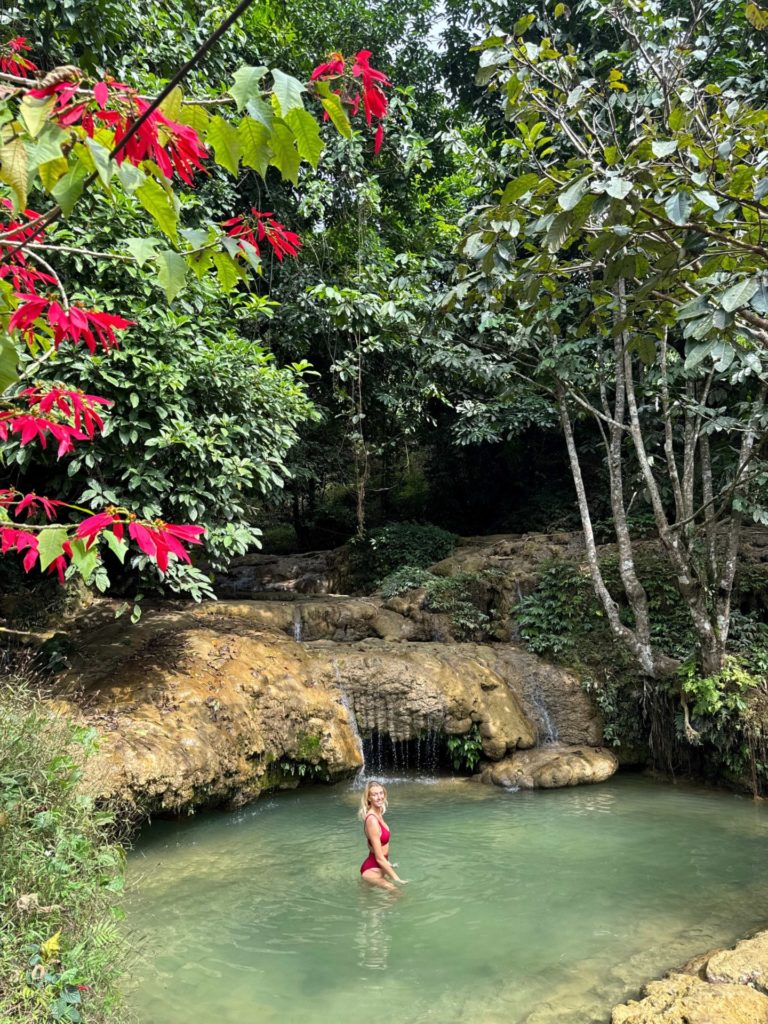
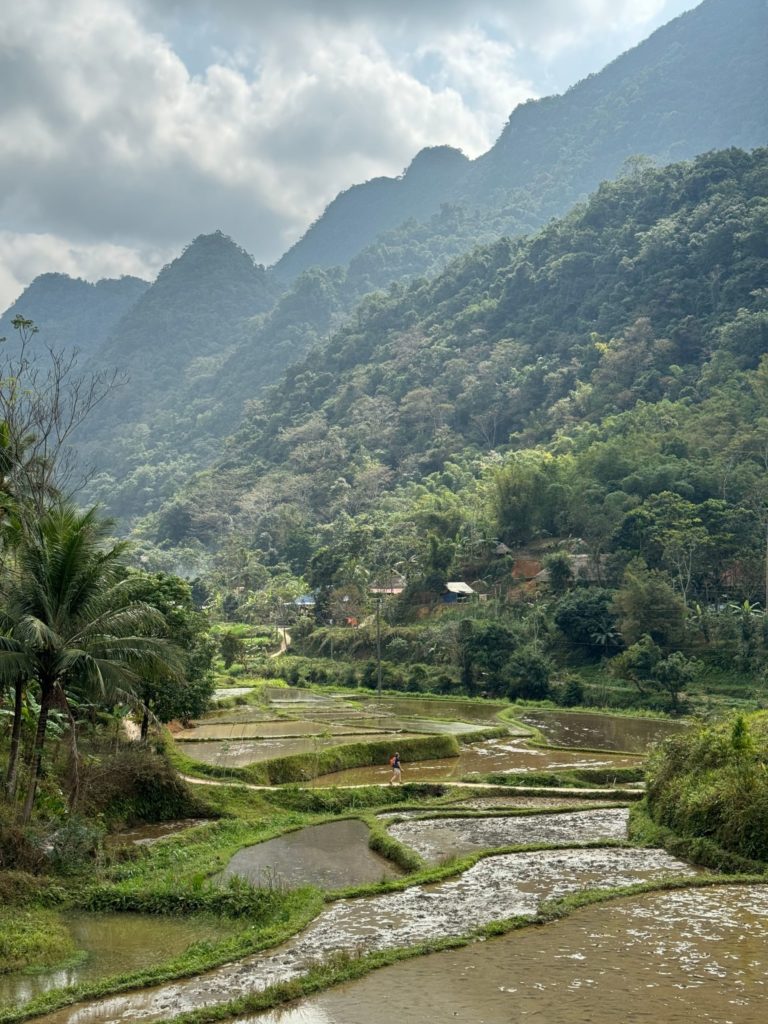
This itinerary combines some of the most famous sights in northern Vietnam with some absolute hidden gems and off the beaten path locations, giving you the best of both worlds!
You only need one full day in the capital city to get a good feel for it. It’s absolutely hectic, with beeping horns and mopeds in all directions – making crossing the street an interesting experience! I loved wandering the streets as it felt like such an immersive and all-encompassing experience, with so many sights, sounds and smells. Here’s a few highlights you shouldn’t miss:
This is the beating heart of the city and where all the action is, with so much to see on every street. Make sure you pop into St Joseph’s Cathedral, walk around Hoàn Kiếm Lake and explore Ngoc Son Pagoda.
This is a local coffee speciality which is sweet and delicious, combining whipped egg with condensed milk and coffee. Another staple is coconut coffee which was my personal favourite. If you want to stop by at a cute, quaint and little known cafe which makes the best hot drinks, try Ca Bop.
The best way to do this is to book a food tour! But if you want to go it alone, then the most famous sandwich spot is Banh Mi 25, which I didn’t try but my pals did and they loved it. Be warned though, it has a mega queue! My personal favourite restaurant was Huong Viet – a tiny little known spot which prepares the MOST delicious fresh food and has plenty of veggie options. I went there twice and would go again in a heartbeat.
This is a famous street tucked in close to a trainline, where you can grab a coffee and watch the trains pass by. It doesn’t sound that exciting but trust me, it’s epic! The best way to get onto the street is to go to a cafe on it, as there are policemen patrolling who will kick you off if you’re caught just wandering along the tracks. Just next door is Phung Hung Mural Street which is also worth a visit to see over 20 murals depicting scenes of everyday Vietnamese life.
Hanoi is steeped in history, so if you want to learn more about it I recommend heading to Hao Lo Prison, the Imperial Citadel and The Mausoleum.
Hanoi has a whole range of lush rooftop spots where you can grab a drink and overlook the city. I recommend Skyline, Diamond Sky or Twilight.
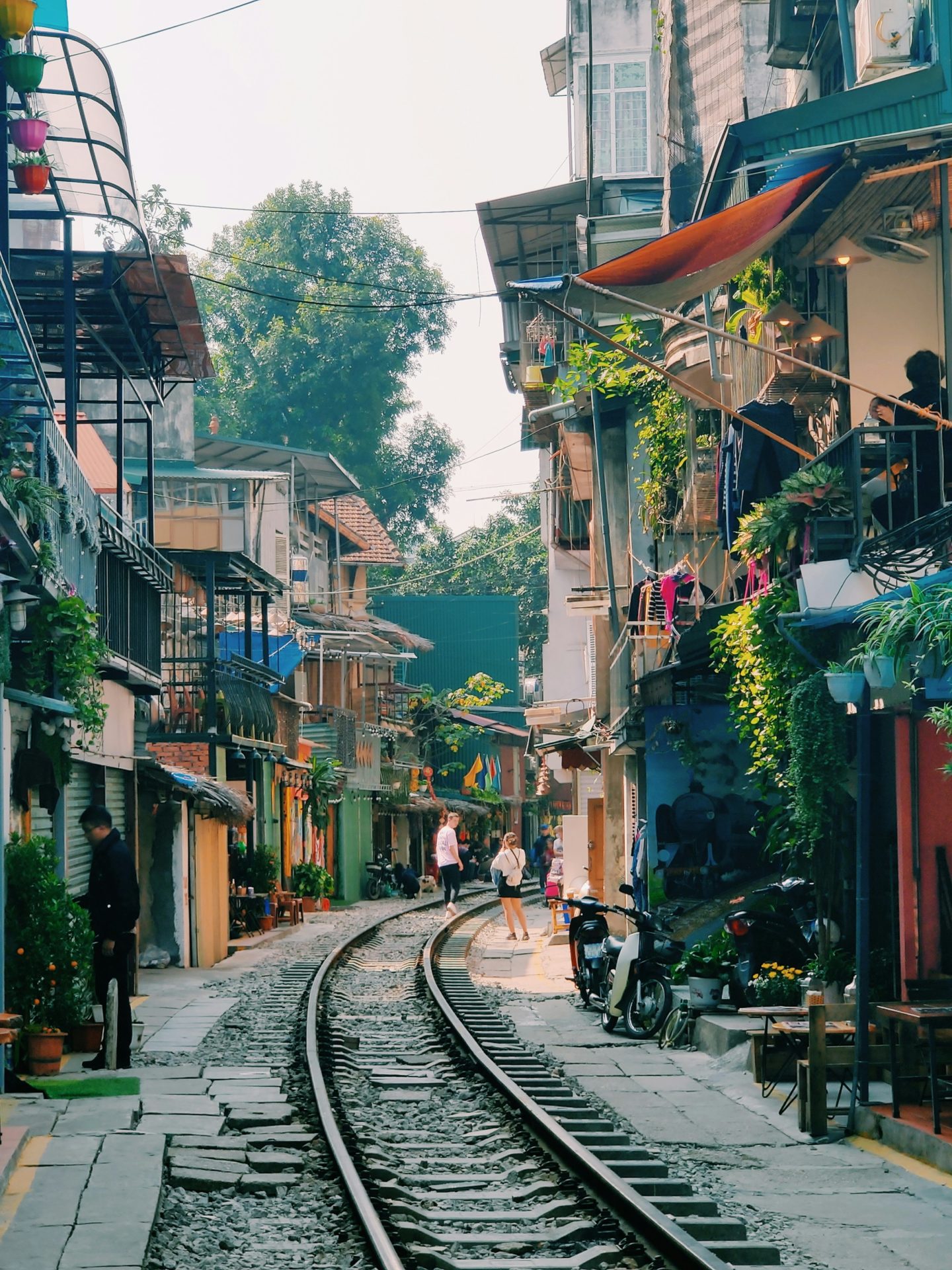
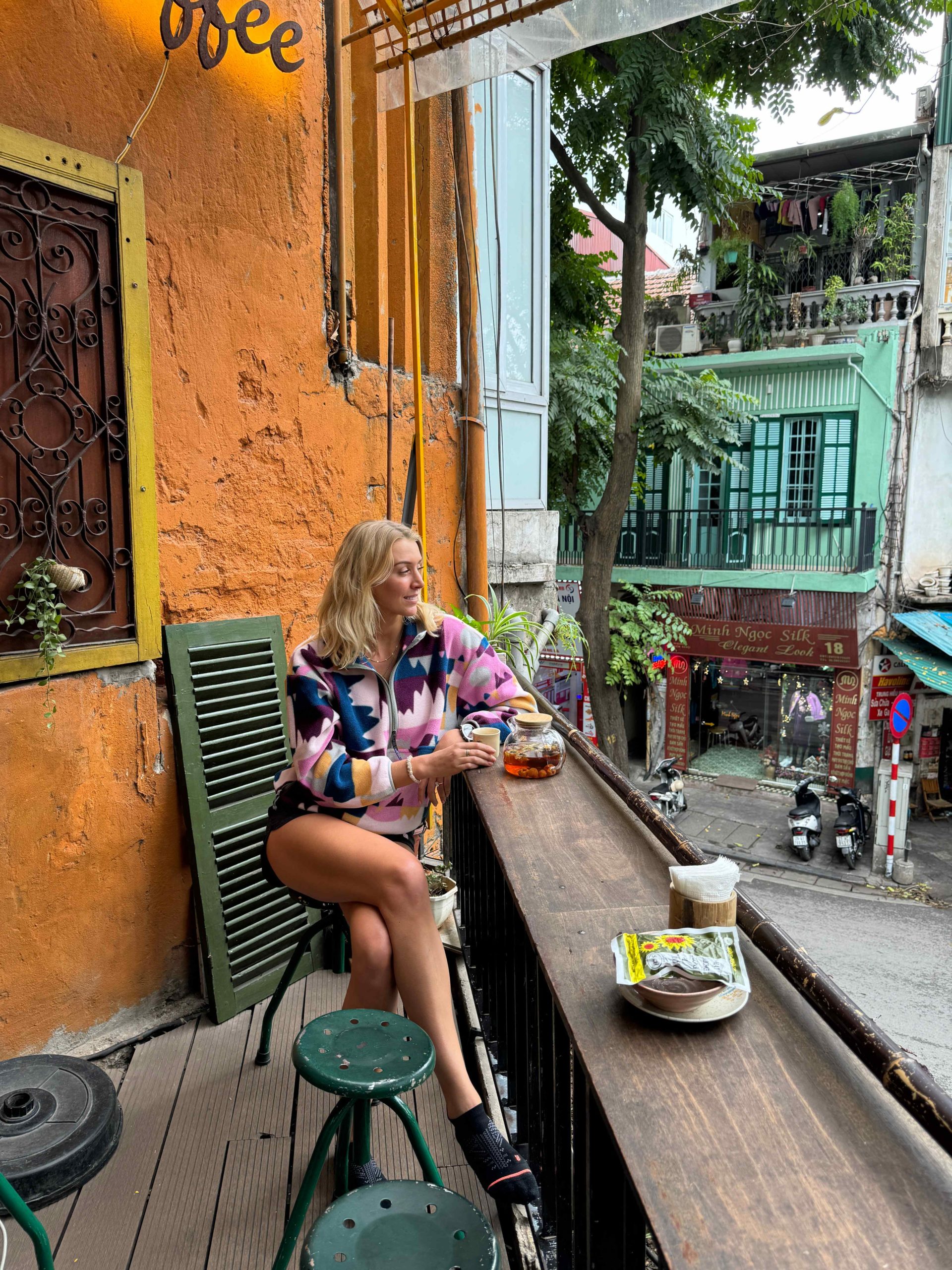
On a little side note, if any of you are runners like me then I recommend lacing up your shoes and going for a jog around West Lake. It’s the best location to get out and stretch your legs with minimal traffic, clear footpaths and fresh air.
Recommended accommodation: Babylon Grand Hotel.

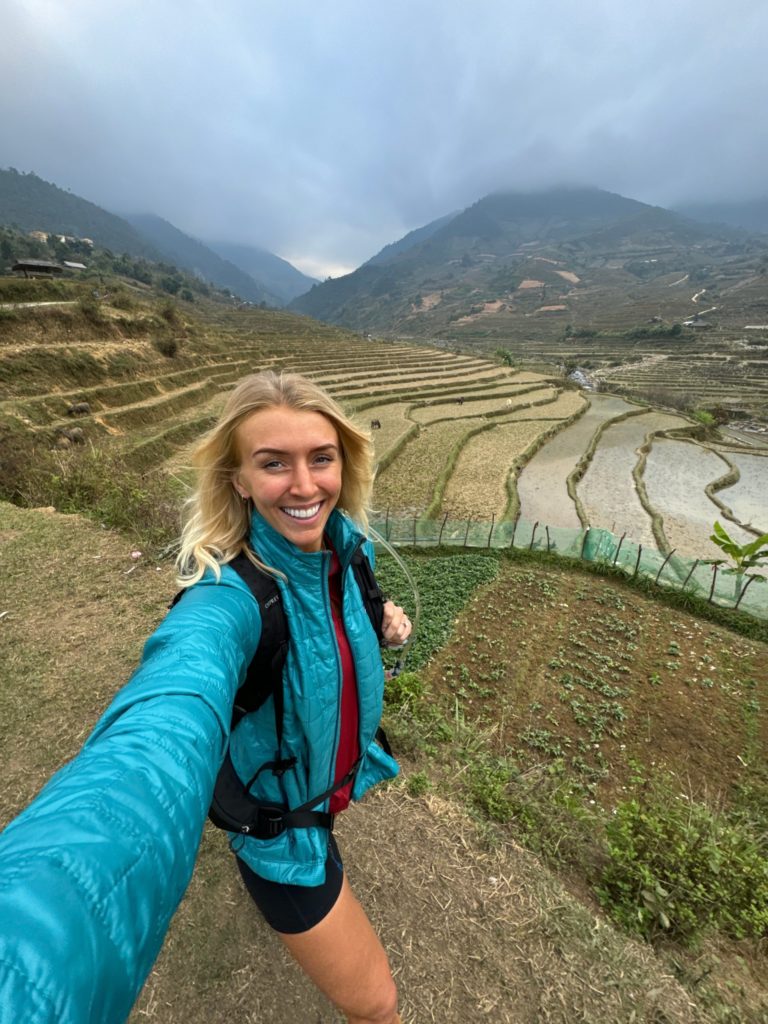
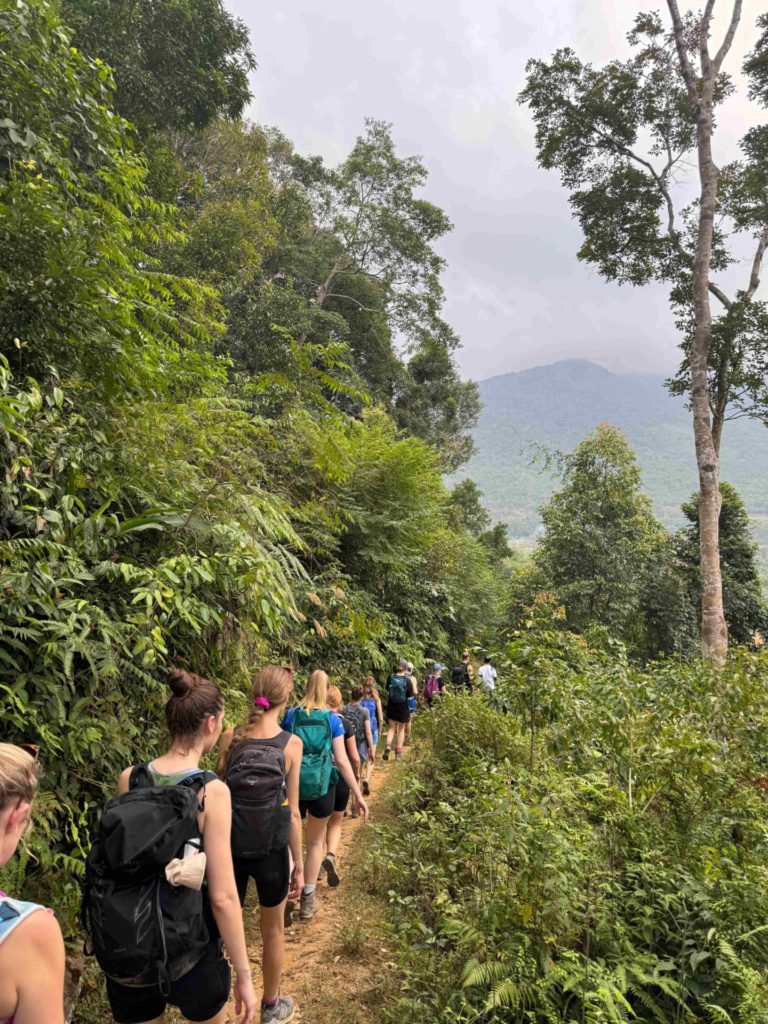
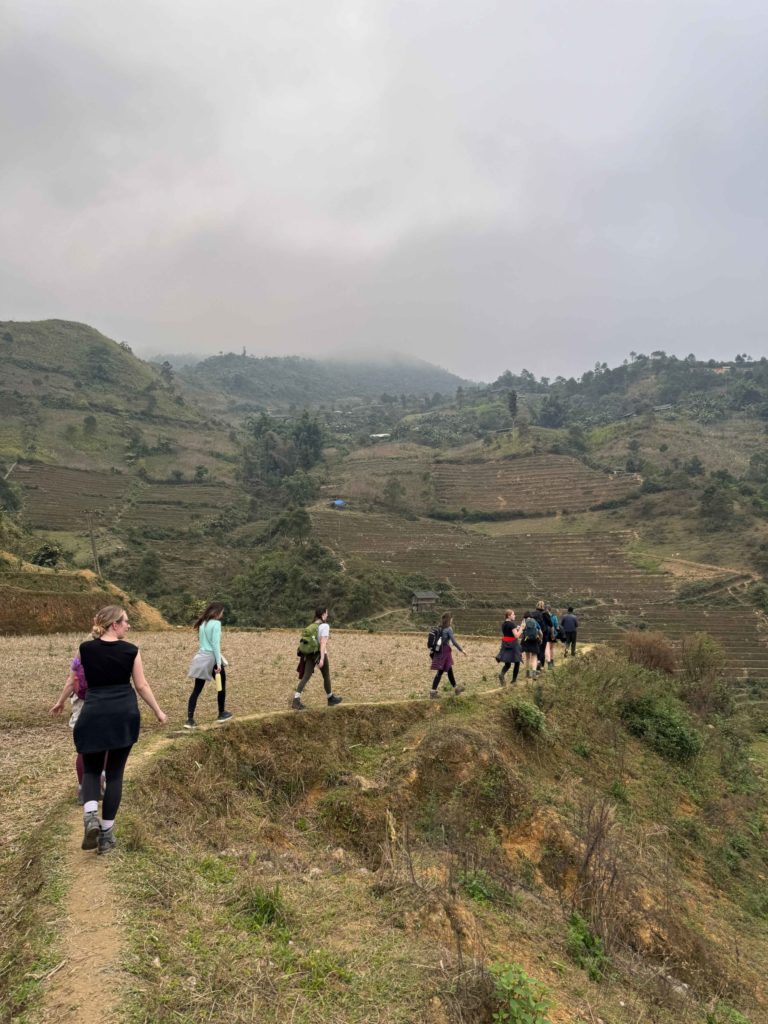
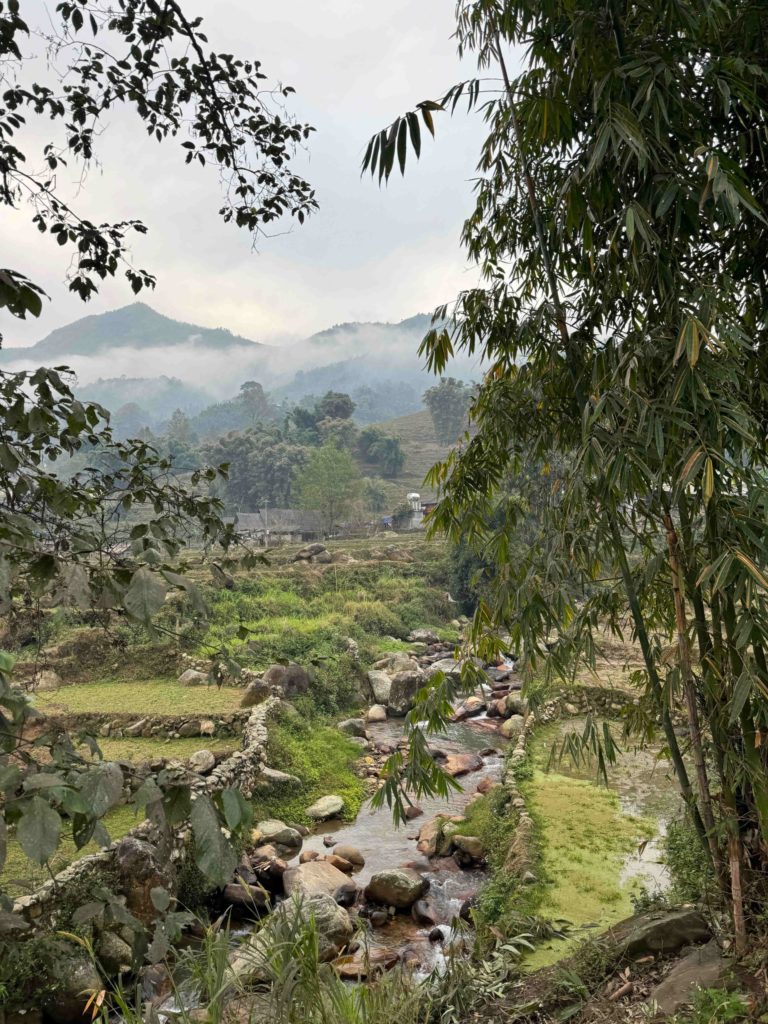
On our way up to Sapa we made a stop in Khau Phạ for a couple of days. This really felt off the beaten track and we didn’t see a single tourist in the two days we were there! We hired a local guide, hiking to the Kien Panh Homestay and through the surrounding rice paddies.
Rural homestays were a real highlight of our trip. They’re such an authentic experience, allowing you to immerse yourself in the community, connect with the locals and experience their way of life. Plus, you’re supporting sustainable community-based tourism projects. The prices are super affordable and the facilities are simple. Beds are typically mattresses on the floor in large shared rooms, and there are usually a couple of showers for guests to use. I was pleasantly surprised that we had (limited) hot water at all our homestays which was such a treat and not necessarily the norm! Oh and did I mention the food is fresh, delicious and home-cooked right in front of your eyes? Honestly, if there is one thing you do in Vietnam, go to a rural homestay.
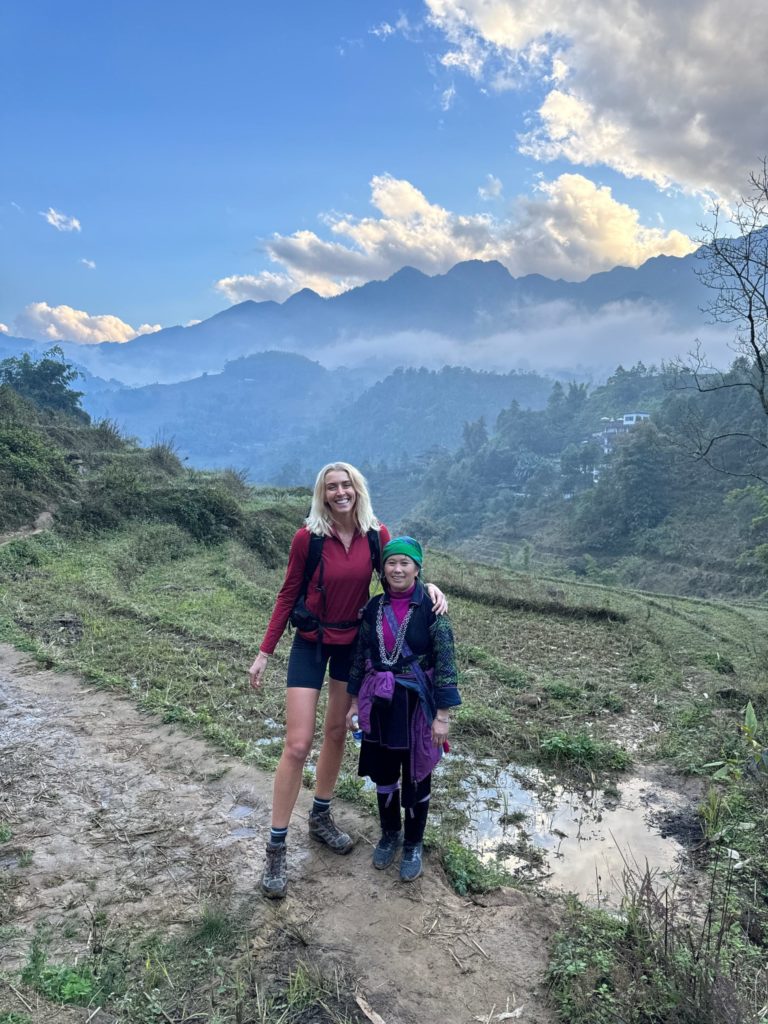
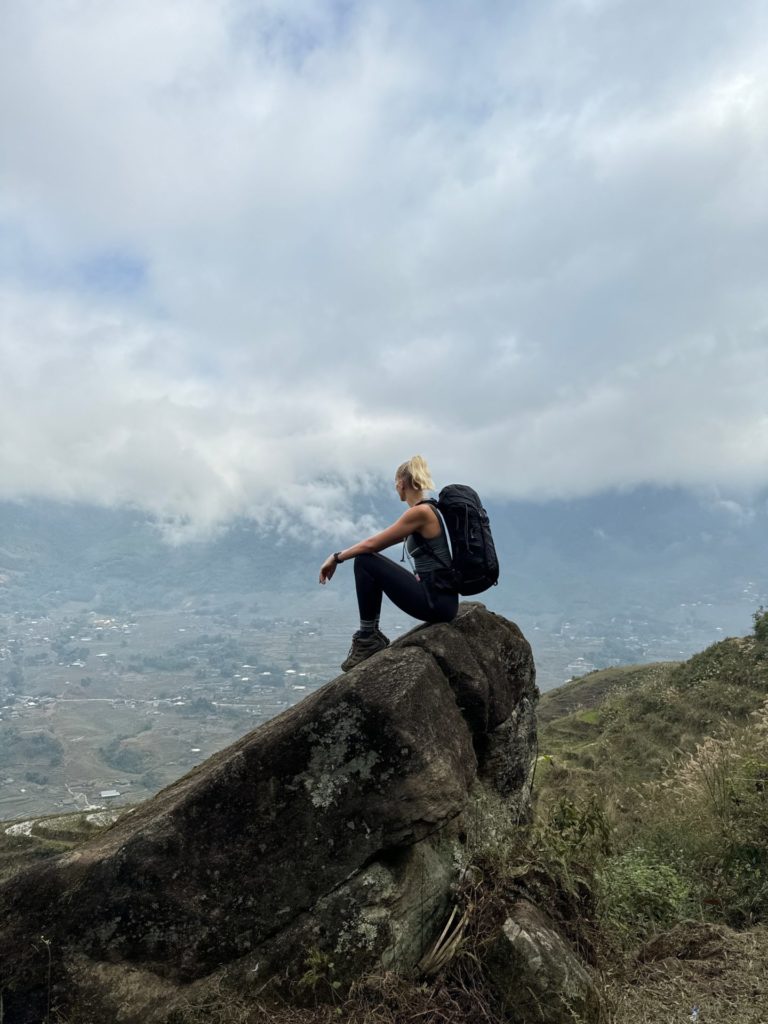
Sapa is the hiking capital of Vietnam and where most tourists flock to lace up their hiking boots, and for good reason. It’s a beautiful region, right next to the border of China, and it’s covered in expansive rice terraces. The scenery is absolutely stunning, but don’t expect to be alone on the hiking trails. It is totally worth braving the crowds though.
A scenic hiking route, and the one we followed, was from Sapa to Lao Chai where we stayed in Em Oi Sapa May Family homestay (another personal highlight of the trip) before continuing on the next day, looping through Tan Van and on to Su Pan. You can do this hiking route alone, but I would recommend hiring a local guide to not only make it easier but to support the mountain communities. They can plan and choose a route which is right for you, customising it to your needs, preferences and abilities.
If you’re up for a challenge, you can hire a guide and conquer Fansipan, the highest mountain in Vietnam, over a two-day trek. The alternative is taking the cable car up there, but where’s the fun in that hey?!
Recommended accommodation: Sapa Eco Villas.
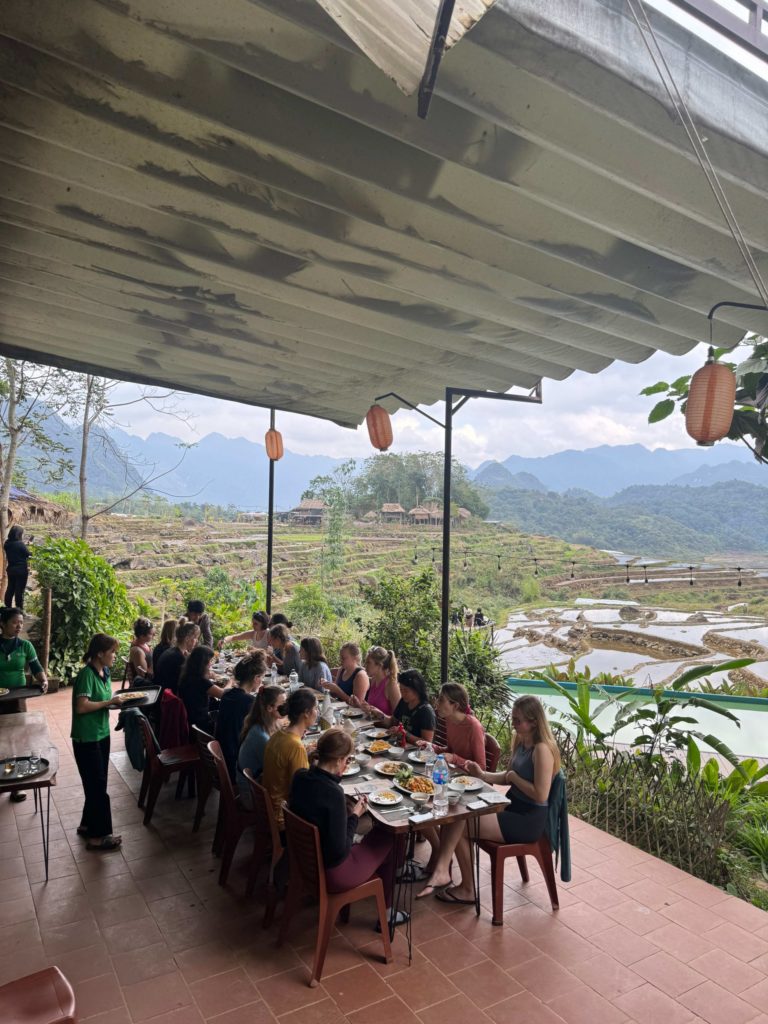
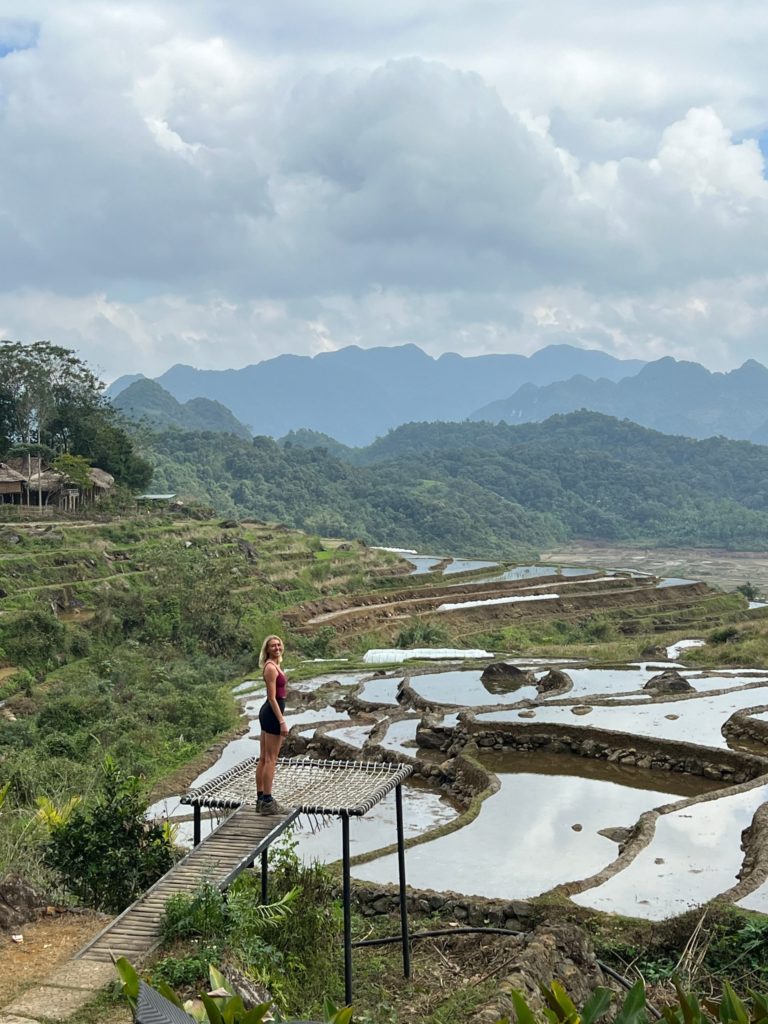
This was by far my favourite region we visited in Vietnam. Just WOW. It’s a nature reserve with dramatic limestone mountains covered in dense jungle, as well as rolling rice terraces. The views were absolutely out of this world, and the best bit? We saw almost zero other tourists. Because of this, it really felt like we had found a pristine hidden gem away from the crowds.
The main activity in Pu Luong is hiking and there are plenty of trails to choose from on platforms like AllTrails. We did a couple of routes which you can see here and here, with a personal highlight being a 22km loop hike via Hieu waterfall where we took a refreshing dip in the sunshine. Bliss! You can either hike alone or hire a local guide who can take you on day hikes or multi day treks where you stop off at different homestays. We based ourselves at Valley Home homestay and it was incredible. The food was delicious, the facilities were top notch and we had stunning views over the rice paddies and mountains.
Another activity in Pu Luong is taking a bamboo raft down the Cham River and getting up close and personal with the local farming way of life as you go. If you’re visiting this region, keep in mind that it is mostly touched by tourists. As a result, you won’t find many shops or convenience stores to buy essentials or coffee. Instead, I recommend bringing everything you need with you and just enjoying the peace and quiet.
Recommended accommodation: Valley Home Homestay.
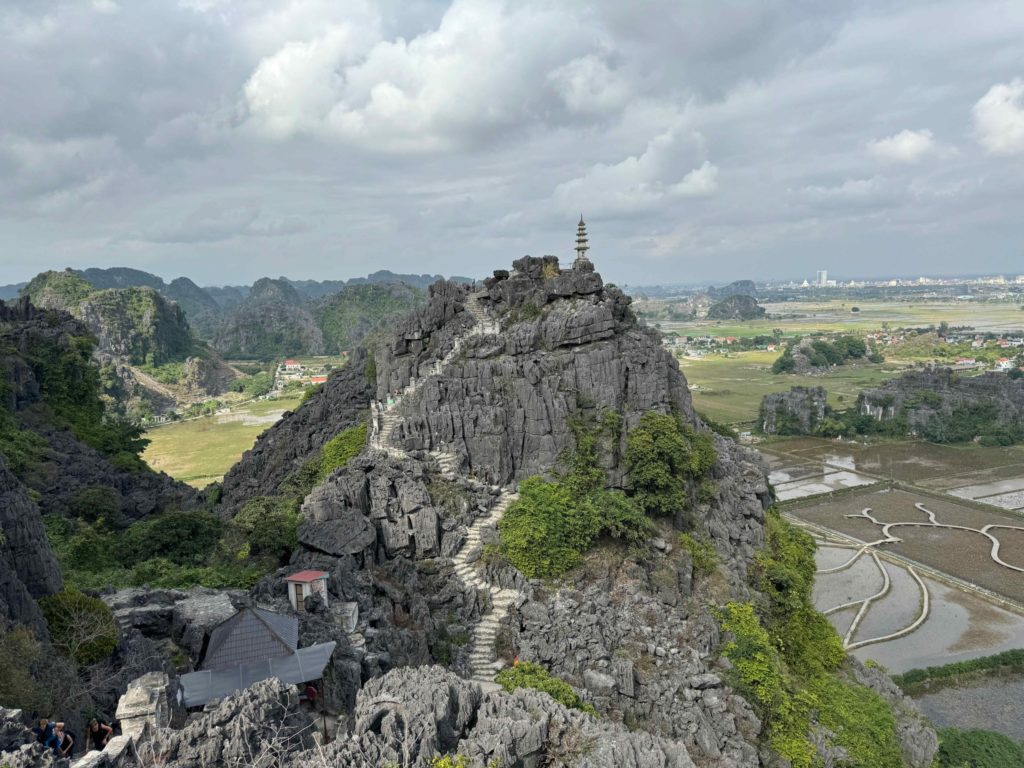
Alright, it’s time to get back on the well trodden tourist track. But, I promise it’s worth navigating the crowds to experience the sheer beauty of Ninh Binh! By Ninh Binh I don’t mean the city itself, I mean the natural landscapes surrounding it.
There are two key activities you can’t miss in this region:
In terms of accommodation, try to stay in the countryside towns of Trang An or Tam Coc rather than the city of Ninh Binh and you will have a much more enjoyable experience.
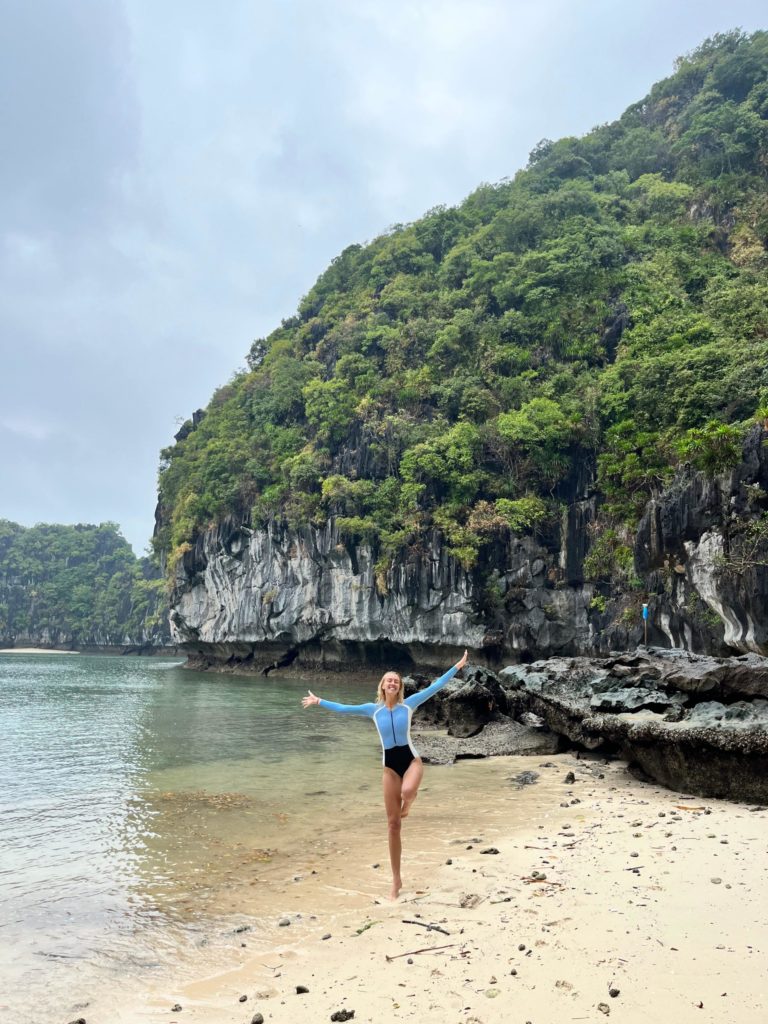
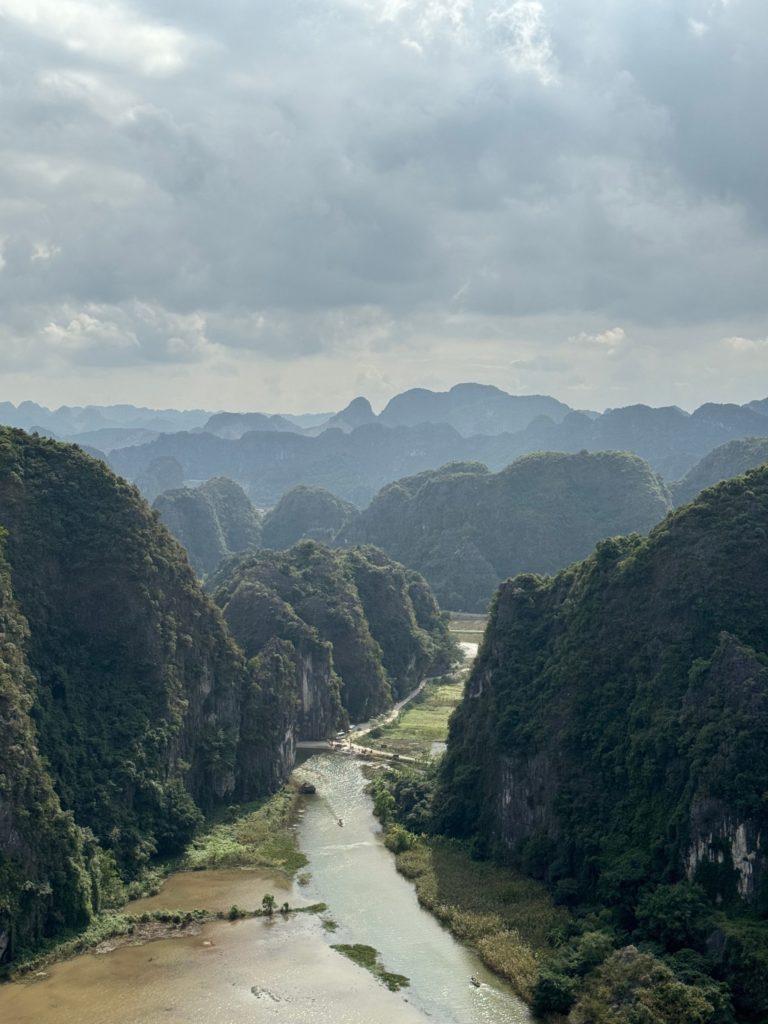
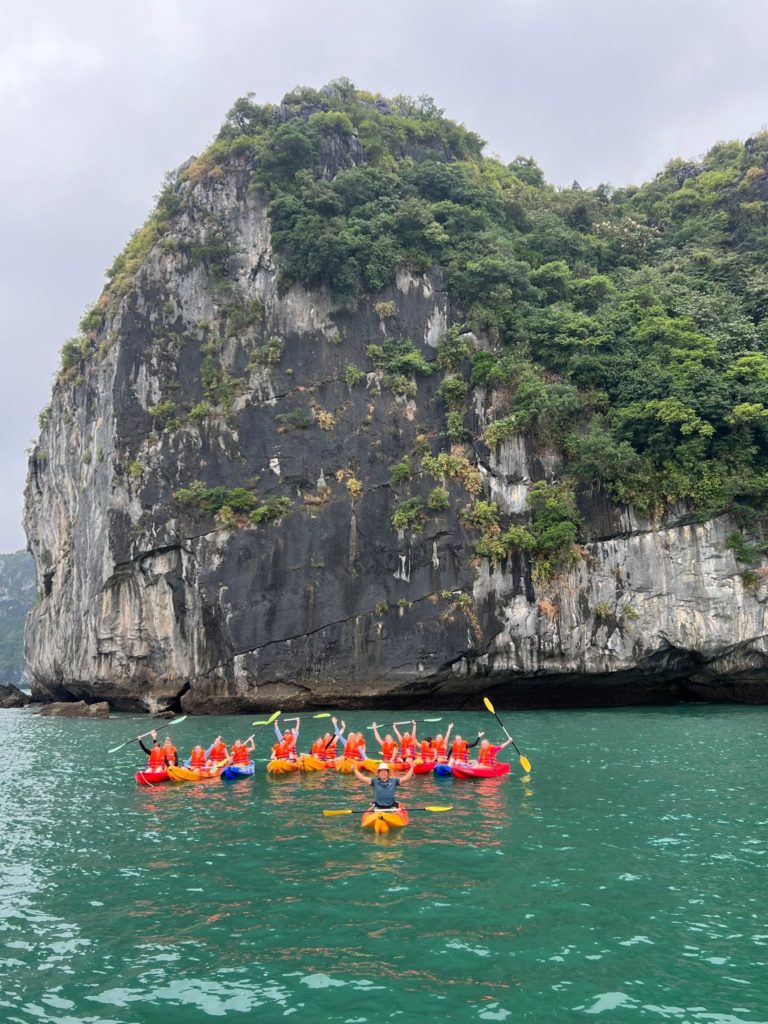
If you want to experience the beauty of Halong Bay with a fraction of the crowds, and the added bonus of white sand beaches, then head to Cát Bà Island. Here are a few things to add to your itinerary:
Recommended accommodation: Cát Bà Eco Lodge or Lan Ha Floating Homestay.
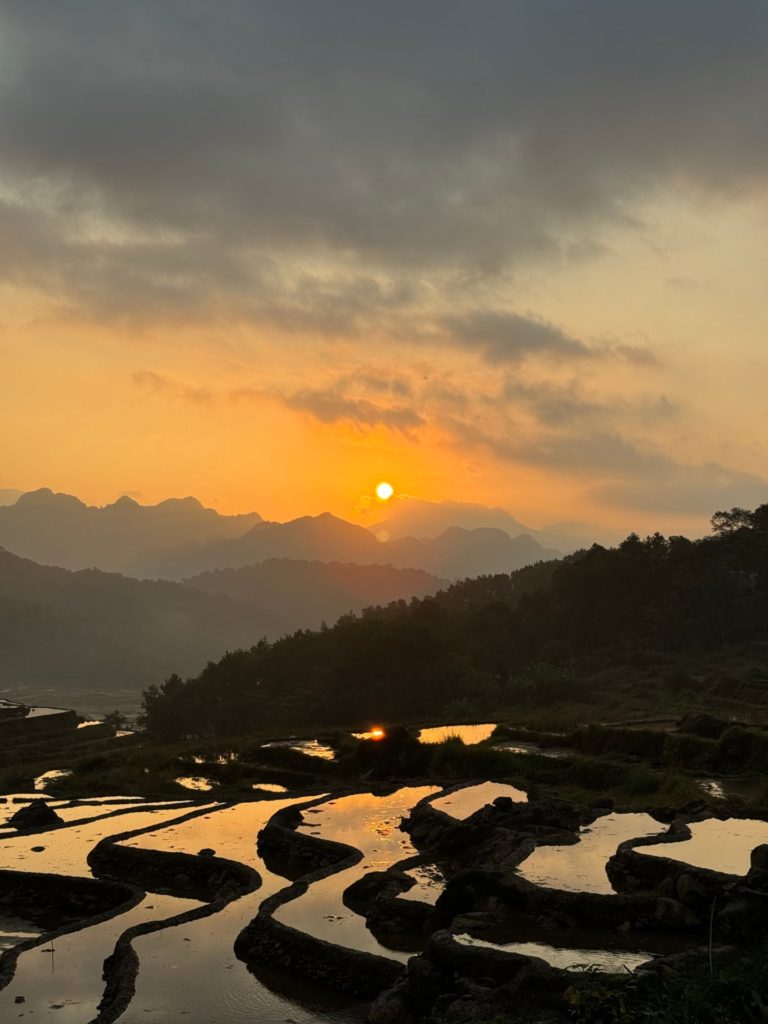
There is so much to see and do in Northern Vietnam. You could honestly spend months there and only scratch the surface. If you’re looking for even more suggestions for your travels, I found this article useful when looking for hidden gems.
Safe travels,
Zanna xx
Let me slide into your inbox. A monthly newsletter of all the good stuff – latest posts and videos, rants and rambles, recommendations and resources.
Website Designed by Brogan Daisy Digital © Zanna Van Dijk 2025